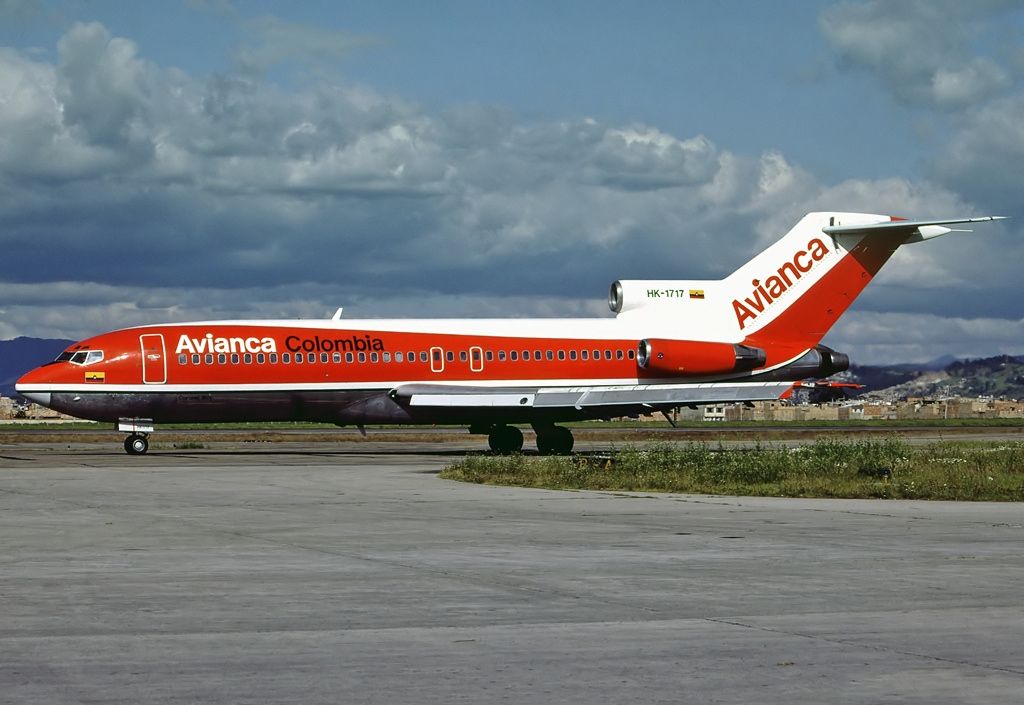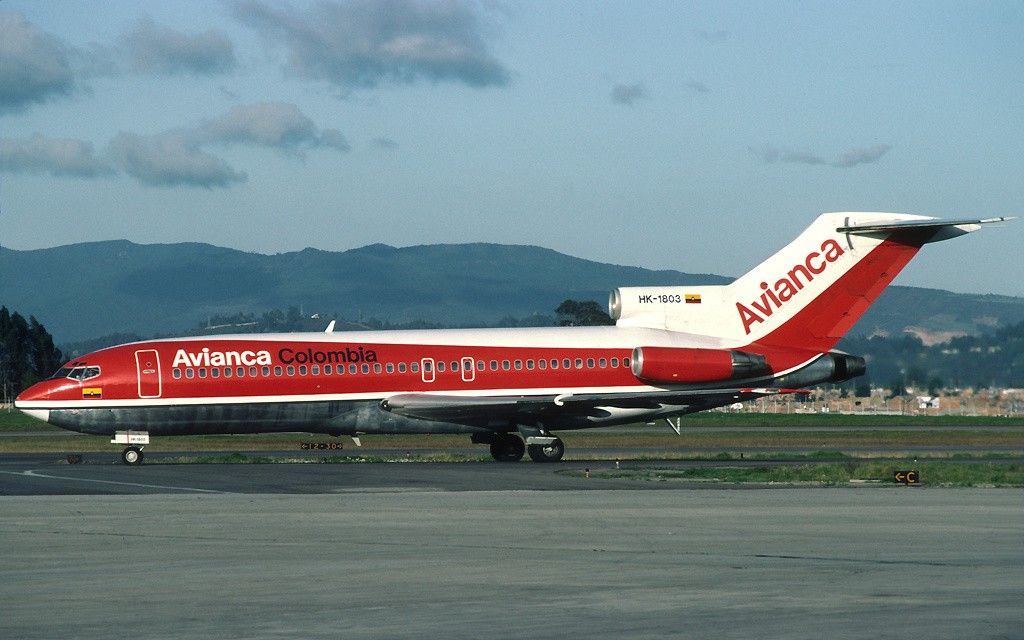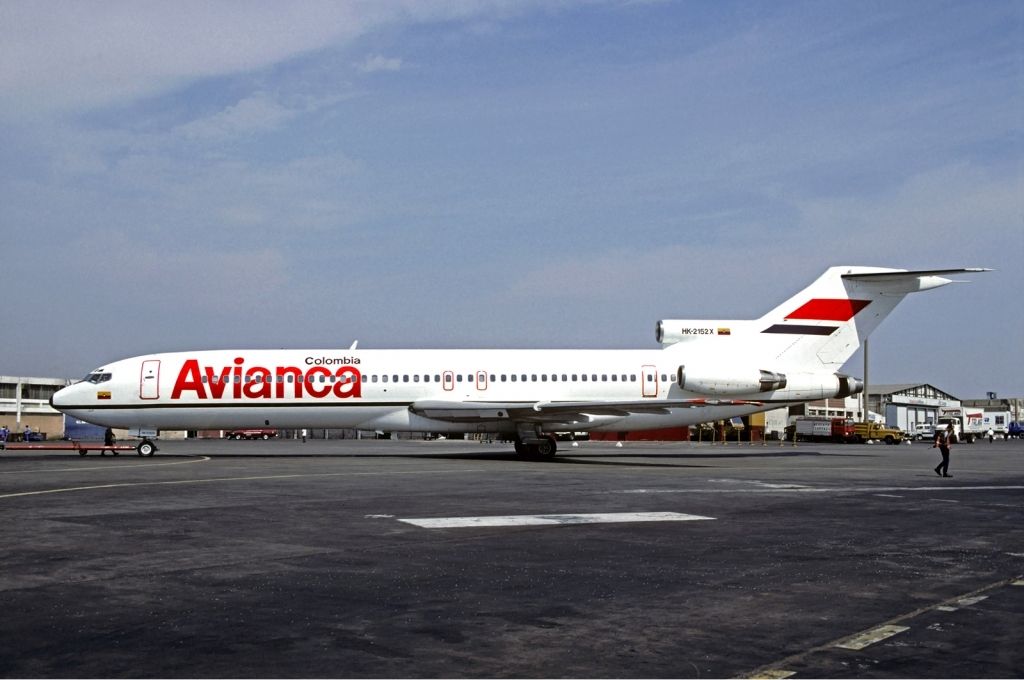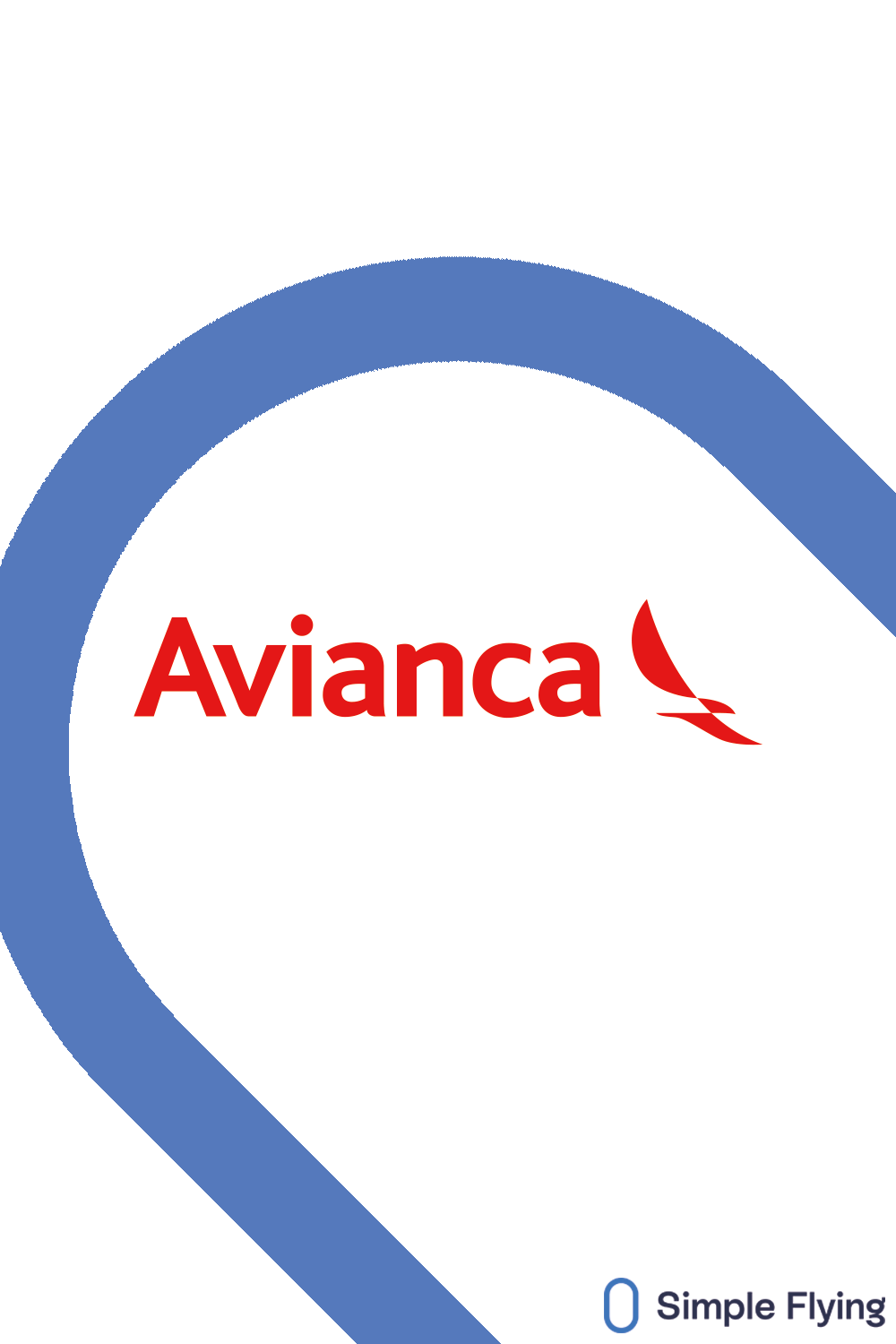33 years ago today, on November 27th, 1989, Avianca flight 203 fell from the sky over Colombia after being destroyed inflight following a bombing attack. Operated by a three-engined Boeing 727 jetliner, the service was en route from Bogota to Cali at the time of the tragedy. Let's take a look back in time to see how it unfolded.
The flight and aircraft involved
Avianca flight 203 was a scheduled domestic service that originated at El Dorado International Airport (BOG). This facility serves the Colombian capital city of Bogotá, and remains a key hub for Avianca today. After all, the Star Alliance airline is the flag carrier of Colombia, and has been since its foundation as SCADTA in 1919.
The flight's destination was Alfonso Bonilla Aragón International Airport (CLO), which serves the Colombian cities of Palmira and Santiago de Cali. Avianca continues to link this facility with Bogotá's El Dorado International Airport today, alongside other local carriers such as LATAM Colombia, Ultra Air, Viva Air Colombia, and Wingo.
According to the Aviation Safety Network, the aircraft operating Avianca flight 203 when it fell victim to a bombing attack 33 years ago today was a Boeing 727-200 registered as HK-1803. Data from ATDB.aero sh23.5 years old at the time, having been built in May 1966. The ex-Pan Am trijet, which joined Avianca 14 years beforehand in November 1975, had 101 passengers and six crew members onboard.
Love aviation history? Discover more of our stories here!
Destroyed inflight
To begin with, the flight operated as planned, taking off from Bogotá's El Dorado International Airport on time, just after seven o'clock in the morning. However, the aircraft was still climbing toward its cruising altitude when things took a turn.
Approximately five minutes into the flight, the 727 was climbing through an altitude of 13,000 feet (3,962 meters) above sea level. It was at this point that an improvised explosive device onboard the aircraft was detonated. The bomb had been stored under seat 14F, whose proximity to the empty center fuel tank caused problems.
Specifically, the explosion compromised this tank, and prompted the ignition of fuel vapors that were present. These caused a fire to break out on the right-hand side of the trijet's fuselage, as noted by eyewitnesses on the ground, before a second explosion broke the plane apart in mid-air. From there, its debris crashed to the ground across a three-mile radius near the municipality of Soacha.
Get the latest aviation news straight to your inbox: Sign up for our newsletters today.
Aftermath, investigation, and trial
The bombing killed all 107 people onboard, as well as three more on the ground due to the impact of falling debris. This made the tragedy Colombia's second-deadliest air disaster at the time, and it currently ranks fourth. An investigation determined that a bomb had indeed destroyed the jet. FlightRadar24.com shows that Avianca still used the flight number AV203 as recently as this summer.
The attack was said to have been the work of Medellín Cartel, known for having been led by infamous drug baron Pablo Escobar. Despite controversial recent reports that a faulty fuel pump caused the explosion, the gang's involvement was confirmed when, in 1994, cartel member Dandeny Muñoz Mosquera was handed 10 life sentences for his role in the bombing, among other offenses.
Sources: ATDB.aero, Aviation Safety Network, El Espectador, FlightRadar24.com, New York Times




